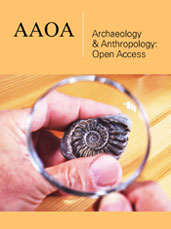Erik Erikson on Negative Identity & Pseudospeciation- Extended and Particularized by Ta-Nehisi Coates by Friedman LJ* in Archaeology & Anthropology: Open Access_ American Journal of Archaeology

Introduction
One can feel challenged in
this chilling time when sundry variations of ultra-nationalism have become
quite discernable in the USA, Europe, the Middle East, and parts of Africa.
They have often taken the form of a rhetoric of fear and hatred toward
“undesirables.” In this time of trouble in an increasingly nuclearized world,
it is well to turn to Erik Erikson. His related concepts of “negative identity”
and “pseudospeciation” need to be addressed more fully than they have in recent
decades. Much is to be gained by both academic discussion and public debate
over these two Erikson concepts. They signal elements in his “Way of Looking at
Things.” More immediately, they help us address the crude and dangerous
ultra-nationalisms of our time. Sensitive to the intimate relationship between
the inner self and the outer social circumstances, Erikson, began in the mid
and late 1940s to shape his most central concept - identity formation. It is
well to refresh ourselves on the qualities he assigned to identity, for without
that recall, one can hardly come to grips with his concepts of “universal
Specieshood” and “pseudospeciation”,
both of which emerged from it. In Childhood and Society [1], perhaps his most
innovative book, Erikson displayed a marked cross-cultural perspective,
comparing psychological development in several countries and cultures. While
“officially” pledging fealty to Freudian psychoanalysis, Erikson was more
attentive than Freud had been to ways the social circumstances of a society
impacted the inner psyches of its members
https://crimsonpublishers.com/aaoa/fulltext/AAOA.000575.php
Crimson
Publishers: https://crimsonpublishers.com/
For more
articles in The Journal of Pediatrics,
Please
click on below link: https://crimsonpublishers.com/aaoa/



No comments:
Post a Comment